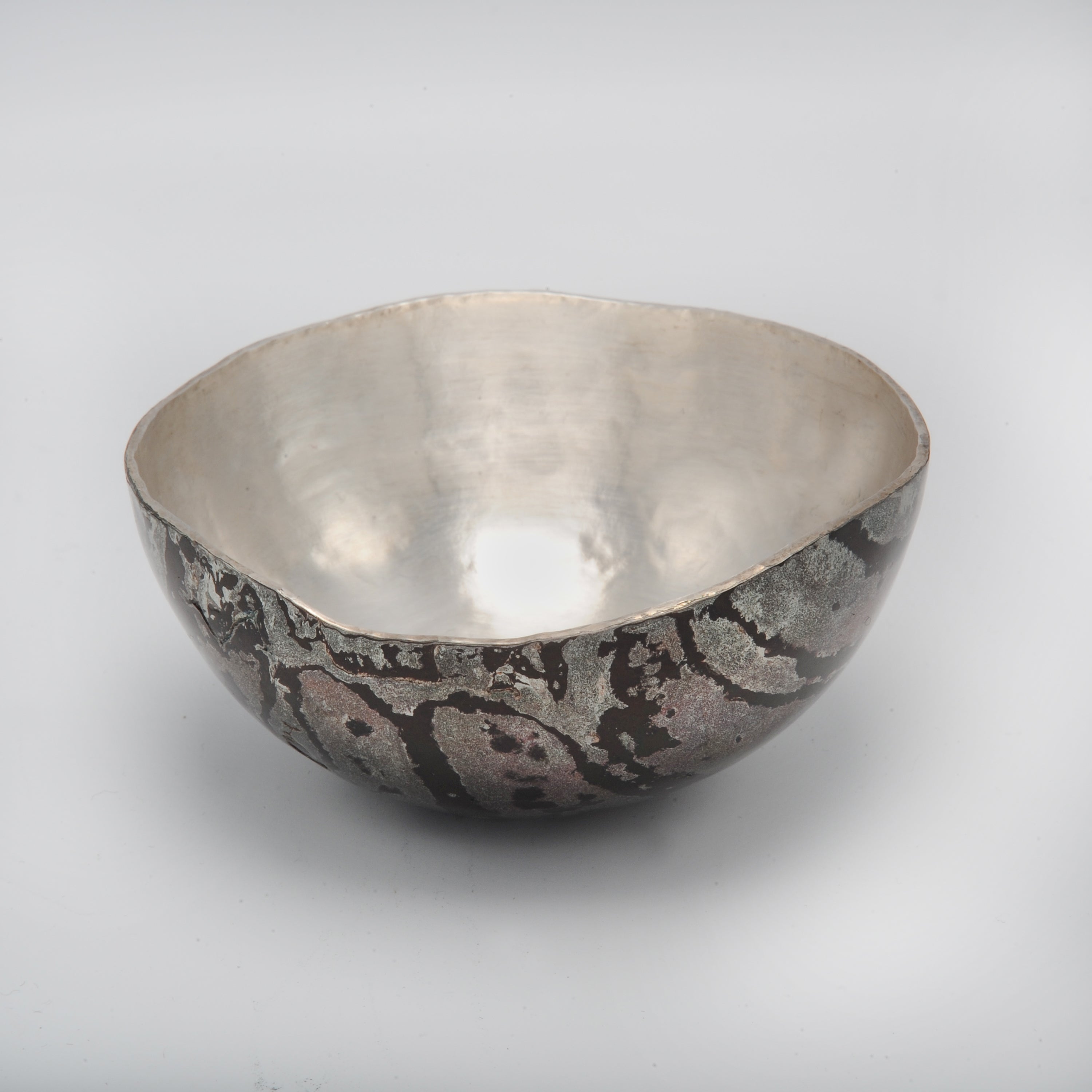A beautiful Mokume Gane bowl forged from silver. This hand raised vessel is fusion bonded with sterling silver and gilding metal, reproducing the traditional Japanese style. This artwork promises to be a signature piece.
Materials: sterling silver, mixed-metal Japanese studio made alloys
Commission time: 6 weeks
Care instructions: Display mindfully in a cool, dry place. Dust regularly by hand with a clean, soft cotton cloth.
80mm x 35mm
Mokume Gane is a three hundred year old Japanese metalworking technique which continues to be practiced by specialist metalsmiths. Originally used to produce decorative sword fittings, the traditional style presents today in the form of jewellery and fine wares, exemplified by Maciek's quintessential bowls and tumblers. Translated as eye of the woodgrain metal, the process of production is time-intensive, involving the lamination of pure metal and traditional Japanese alloys.
For Maciek, silver is combined under high temperatures with layers of gilding metal and studio made precious alloys to produce a thick sheet of contrasting yet bonded metals to form a billet. The sheet is then rolled out to a thickness of only a few millimetres, such that it can be reformed and manipulated to the Artisans' desires. Additional labour-intensive processes of adroit shaping, forging and carving, reveal the archetypal wood-grain pattern only accessible with hours of expert attention. Given the nature of the Mokume Gane technique, each piece of Maciek's compositions is unique and expertly formed: the perfect talking-piece for your home.
The Process
Maciek works with traditional silversmithing techniques such as the use of pitch, which you can see here, that he uses to stabilise his work while he hand chases designs onto its surface. He is also inspired by Japanese metal working practises like the Mokume Gane work on his bowls. Maciek produces this design by creating his own alloys which are then fused together to produce the wood grain asthetic associated with Mokume Gane.

High above the bustle of Glasgow’s city centre nests a covey of craftspeople. From their den, materials such as wood and metal are manipulated using fire, acid, and persistence to form, re-form, and transform raw material into Earthly treasures. One such Artisan is Maciek. Following completion of formal educations college and art school, Maciek joined the workshop as an apprentice to further develop his relationship with silver. The opportunity to operate in this environment means he can learn by doing; physically engaging with the bench, tools, and comrades around him means that he can introduce his own spin and spirit into his pieces, while surrounded by support and banter. The space itself concocts an over abundance of words, visually cueing, a chaos of oxidised silver, dusted books, treasured photographs, and decades old tools, often in finished positions. However, what is clear, is the importance of re-centring, grounding oneself through interaction with one and other. Each individual possesses a variety of skills, approaches, and attitudes to both their craft and life. A space where juxtaposing ideas can react and synthesise, to produce new techniques and understandings for one and other. For Maciek the dynamic between apprentice and master is invaluable: it instills the importance of just giving something a go, remaining humble in times of success, learning from blunders, picking oneself up, and the notion of ultimate satisfaction upon its completion. It can be argued that each of Maciek’s wares is the sum of these experiences: when you create, the object holds more than just a stamp but also the stories which fostered it. Stories of the culmination and constant evolution of his skill, of emotions, sparked, thoughts pondered, and the happenings of what occurred during the time of its creation. Each piece is more than just its function, or even a deconstruction of its intended function. The creation of a physical item will always be a self-centred process, since without the creator the created would not exist. However, it is clear that once such items are under new possession its stories and spirit endure and continue to culminate stories throughout its lifetime through the hands it passes through.



